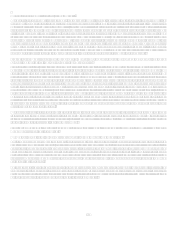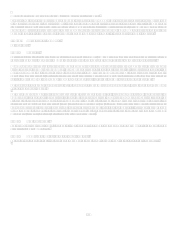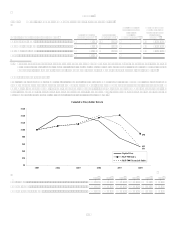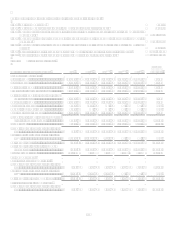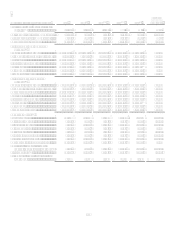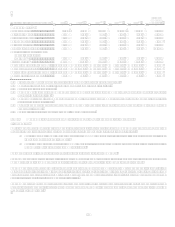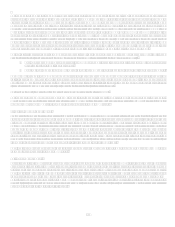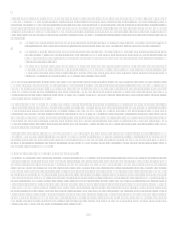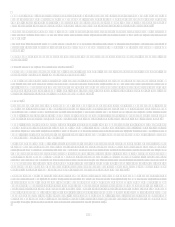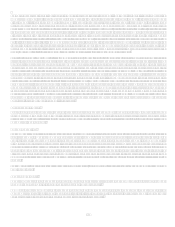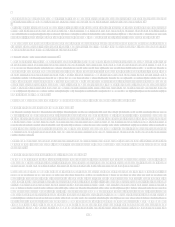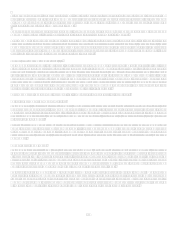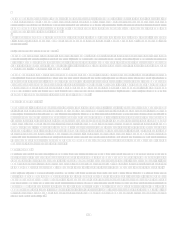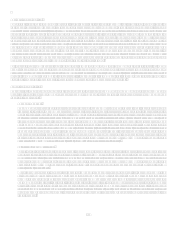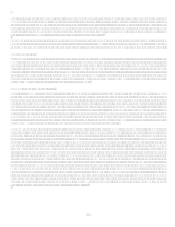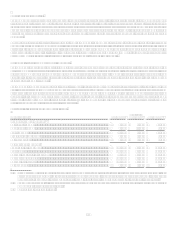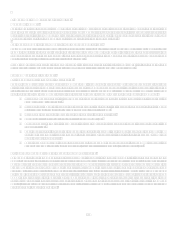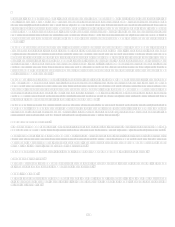Capital One 2008 Annual Report Download - page 50
Download and view the complete annual report
Please find page 50 of the 2008 Capital One annual report below. You can navigate through the pages in the report by either clicking on the pages listed below, or by using the keyword search tool below to find specific information within the annual report. 32
Commercial and small business loans are considered to be impaired in accordance with the provisions of SFAS No. 114, Accounting
by Creditors for Impairment of a Loan, (SFAS 114) when it is probable that all amounts due in accordance with the contractual
terms will not be collected. Specific allowances are determined in accordance with SFAS 114. Impairment is measured based on the
present value of the loans expected cash flows, the loans observable market price or the fair value of the loans collateral.
For purposes of determining impairment, consumer loans are collectively evaluated as they are considered to be comprised of large
groups of smaller-balance homogeneous loans and therefore are not individually evaluated for impairment under the provisions of
SFAS 114.
Troubled debt restructurings (TDR) occur when the Company agrees to significantly modify the original terms of a loan due to the
deterioration in the financial condition of the borrower. The Company modified an immaterial amount of loans under TDRs in 2008
and 2007.
As of December 31, 2008 and 2007, the balance in the allowance for loan and lease losses was $4.5 billion and $3.0 billion,
respectively.
Valuation of Goodwill and Other Intangible Assets
As of December 31, 2008 and 2007, goodwill of $12.0 billion and $12.8 billion and net intangibles of $0.9 billion and $1.1 billion,
respectively, were included in the Consolidated Balance Sheet.
Goodwill and other intangible assets, primarily core deposit intangibles, reflected on the Consolidated Balance Sheet arose from
acquisitions accounted for under the purchase method. At the date of acquisition, the Company recorded the assets acquired and
liabilities assumed at fair value. The excess of the cost of the acquired business over the fair value of the net assets acquired is
recorded on the balance sheet as goodwill. The cost includes the consideration paid and all direct costs associated with the acquisition.
Indirect costs relating to the acquisition were expensed when incurred.
Goodwill
In accordance with the requirements of SFAS No. 142, Goodwill and Other Intangible Assets, (SFAS 142) goodwill is not
amortized but is tested for impairment at the reporting unit level, which is at the operating segment level or one level below an
operating segment. Impairment is the condition that exists when the carrying amount of goodwill exceeds its implied fair value.
Goodwill is required to be tested for impairment annually and between annual tests if events or circumstances change, such as adverse
changes in the business climate, that would more likely than not reduce the fair value of the reporting unit below its carrying value.
Goodwill is assigned to one or more reporting units at the date of acquisition. The Companys reporting units are Local Banking, U.S.
Card, Auto Finance, and International. The goodwill impairment test, performed at October 1 of each year, is a two-step test. The first
step identifies whether there is potential impairment by comparing the fair value of a reporting unit to the carrying amount, including
goodwill. If the fair value of a reporting unit is less than its carrying amount, the second step of the impairment test is required to
measure the amount of any impairment loss.
For the 2008 annual impairment test, the fair value of reporting units was calculated using a discounted cash flow analysis, a form of
the income approach, using each reporting units internal five year forecast and a terminal value calculated using a growth rate
reflecting the nominal growth rate of the economy as a whole and appropriate discount rates for the respective reporting units. Cash
flows were adjusted as necessary in order to maintain each reporting units equity capital requirements. Our discounted cash flow
analysis required management to make judgments about future loan and deposit growth, revenue growth, credit losses, and capital
rates. The cash flows were discounted to present value using reporting unit specific discount rates that are largely based on the
Companys external cost of equity with adjustments for risk inherent in each reporting unit. Discount rates used for the reporting units
ranged from 10.1% to 14.0%. The key inputs into the discounted cash flow analysis were corroborated with market data, where
available, indicating that assumptions used were within a reasonable range of observable market data.
Based on the comparison of fair value to carrying amount, as calculated using the methodology summarized above, fair value
exceeded carrying amount in the U.S. Card, International, and Local Banking reporting units as of the Companys annual testing date;
therefore, the goodwill of those reporting units was considered not impaired, and the second step of impairment testing was
unnecessary. However, all others factors held constant, a 7% decline in the fair value of the Local Banking reporting unit, a 19%
decline in the fair value the U.S. Card reporting unit and a 5% decline in the fair value of the International reporting unit would have
caused the carrying amount for those reporting units to be in excess of fair value which would require the second step to be performed.
The Auto Finance reporting unit, with a $1.4 billion carrying amount of goodwill, failed the first step as fair value was less than
carrying amount by $909.7 million. The deficit was primarily a result of a reduced estimate of the fair value of the Auto Finance
reporting unit due to fourth quarter business decisions to scale back that business.



